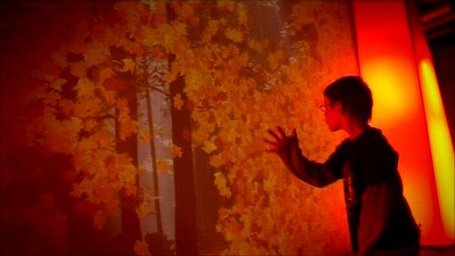Source(google.com.pk)
Desktop Wallpaper 3d Biography












Desktop Wallpaper 3d Biography
2.5D ("two-and-a-half-dimensional"), 3/4 perspective and pseudo-3D are terms, mainly in the video game industry, used to describe either:
2D graphical projections and techniques which cause a series of images or scenes to fake or appear to be three-dimensional (3D) when in fact they are not, or
gameplay in an otherwise three-dimensional video game that is restricted to a two-dimensional plane.
Common in video games, these projections have also been useful in geographic visualization (GVIS) to help understand visual-cognitive spatial representations or 3D visualization.[1]
The terms 3/4 perspective and 3/4 view trace their origins to portraiture and facial recognition, where they are used to describe a view of a person's face which is partway between a frontal view and a side view.[2]
Contents [hide]
1 Computer graphics
1.1 Axonometric & oblique projection
1.2 Billboarding
1.3 Skyboxes & skydomes
1.4 Scaling along the Z axis
1.5 Parallax scrolling
1.6 Mode 7
1.7 Bump, normal & parallax mapping
2 Film and animation techniques
3 Graphic design
4 3D games with a two-dimensional playing field
5 History
6 Technical aspects & generalizations
7 See also
8 References
[edit]Computer graphics
[edit]Axonometric & oblique projection
See also: Isometric graphics in video games
Lincity tiles 2D axonometric graphical elements to create a 2.5D game environment.
In axonometric projection and oblique projection, two forms of parallel projection, the viewpoint is rotated slightly to reveal other facets of the environment than what are visible in a top-down perspective or side view, thereby producing a three-dimensional effect. An object is "considered to be in an inclined position resulting in foreshortening of all three axes",[3] and the image is a "representation on a single plane (as a drawing surface) of a three-dimensional object placed at an angle to the plane of projection."[who?] Lines perpendicular to the plane become points, lines parallel to the plane have true length, and lines inclined to the plane are foreshortened.
They are popular camera perspectives among 2D video games, most commonly those released for 16-bit or earlier and handheld consoles, as well as in later strategy and role-playing video games. The advantage of these perspectives are that they combine the visibility and mobility of a top-down game with the character recognizability of a side-scrolling game. Thus the player can be presented an overview of the game world in the ability to see it from above, more or less, and with additional details in artwork made possible by using an angle: Instead of showing a humanoid in top-down perspective, as a head and shoulders seen from above, the entire body can be drawn when using a slanted angle; Turning a character around would reveal how it looks from the sides, the front and the back, while the top-down perspective will display the same head and shoulders regardless.
Anatomy of an axonometric sprite.
There are three main divisions of axonometric projection: isometric (equal measure), dimetric (symmetrical and unsymmetrical), and trimetric (single-view or only two sides). The most common of these drawing types in engineering drawing is isometric projection. This projection is tilted so that all three axes create equal angles at intervals of 120 degrees. The result is that all three axes are equally foreshortened. In video games, a form of dimetric projection with a 2:1 pixel ratio is more common due to the problems of anti-aliasing and square pixels found on most computer monitors.
In oblique projection typically all three axes are shown unforeshortened. All lines parallel to the axes are drawn to scale, and diagonals and curved lines are distorted. One tell-tale sign of oblique projection is that the face pointed toward the camera retains its right angles with respect to the image plane.[clarification needed]
Two of the most consistent examples of oblique projection are the The Legend of Zelda series of games for the Game Boy, Game Boy Color, and Game Boy Advance; and the Pokémon series for the Nintendo DS. Examples of axonometric projection include the latter games in the SimCity series, and role-playing games such as Diablo and Baldur's Gate.
Desktop Wallpaper 3d

Desktop Wallpaper 3d

Desktop Wallpaper 3d

Desktop Wallpaper 3d

Desktop Wallpaper 3d

Desktop Wallpaper 3d

Desktop Wallpaper 3d

Desktop Wallpaper 3d

Desktop Wallpaper 3d

Desktop Wallpaper 3d

Desktop Wallpaper 3d

Desktop Wallpaper 3d

Desktop Wallpaper 3d
No comments:
Post a Comment